What is side underrun protection?
Side underrun protection consists of guard rails which help prevent other road users from going underneath a heavy vehicle or trailer in an accident.
A long vehicle often has to take a much wider turn into a corner. This can confuse other road users who try to overtake but end up driving under the trailer as the truck turns. It’s particularly risky for cyclists who are knocked off their bikes in substantial numbers in urban areas, so much so that it is now mandatory to have this protection fitted to a truck when entering London (under the Safer Lorries Scheme), and all new vehicles over 3500kg must have them fitted under UNECE Regulation 73. One third of cyclist deaths are caused by cyclists being trapped under the wheels of a lorry in this way.
The side guards must be fitted between the rear wheels and the landing gear (legs) for an articulated vehicle or the rear wheels and front wheels for a rigid vehicle to stop cyclists and motorcyclists falling under the wheels in these occasions.
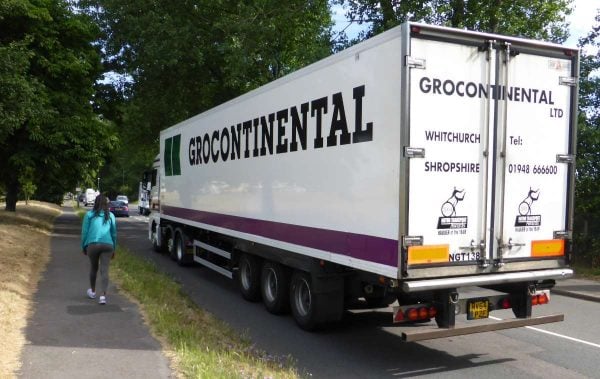
Articulated truck showing the trailer guard rail
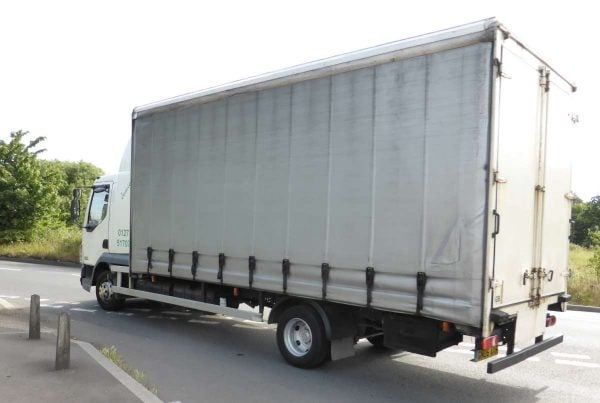
Rigid truck showing guard rail between the cab and the rear wheels
Swept path
When long vehicles turn a corner the rearmost trailer wheels follow a curve with a radius less than that of the outside wheels, as you can see in the diagram below. The swept path is the maximum difference between the outside wheel’s path and the inside wheel’s path. If the driver misjudges the turn, the inner rear wheels of the trailer could mount the kerb, hit road furniture or signs, or (worse) hit a pedestrian or cyclist.
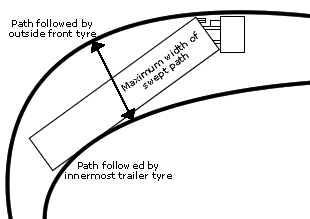
The articulated lorry turning right shows a much wider arc with the outside front wheel of the cab than the inside rear wheel of the trailer
When a very sharp turn is involved into a narrow driveway or street a long vehicle might need to swing out wide, moving into the adjacent lane to give it enough room to complete the turn. Vehicles over certain lengths are banned on many streets where it would be impossible for them to manoeuvre within the street. Signs prohibiting long vehicles look like this:

Length limit sign shows the maximum vehicle length that is permitted on this stretch of road
As well as turning into streets and driveways, roundabouts can pose a problem for some long vehicles, especially mini-roundabouts.
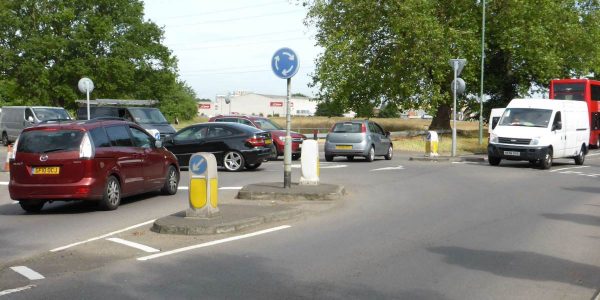
Mini roundabouts like this one in Hackbridge, London are just painted so that long vehicles have less problem negotiating them
Road position at intersections
Motorists can help at junctions by stopping at or behind the line so that turning heavy vehicles can turn in more easily. Lorry drivers still need to judge their turn, but it gives them more room.
In cases where there are vehicles parked on the side of the road, respecting the marked bays will make it easier for all vehicles turning into the street and reduce the risk of a strike by a trailer due to off-tracking, as shown below.
Low speed off-tracking puts vehicles parked close to junctions at risk
Swing out
Swing out occurs when the back corner of the trailer follows a significantly wider arc than the rear axle and can hit objects or people standing close to the kerb.
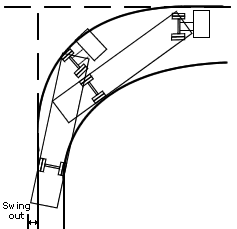
The rear corner of the trailer follows a wider arc than the rear axle
Advice for cars towing long trailers and caravans
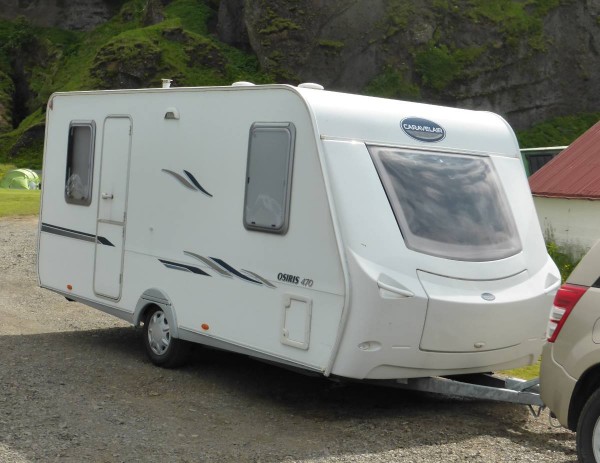
A caravan with a long overhang at the back can suffer from swing out
Car owners undergo very little training in towing compared to a lorry driver. Drivers should be aware of their swept path, swing out (especially on caravans with long overhangs), and off-tracking that occurs when turning a corner. The best case scenario is that the inside wheel of the caravan brushes the kerb, and worse case scenario is that it knocks a cyclist off and causes a fatality.
